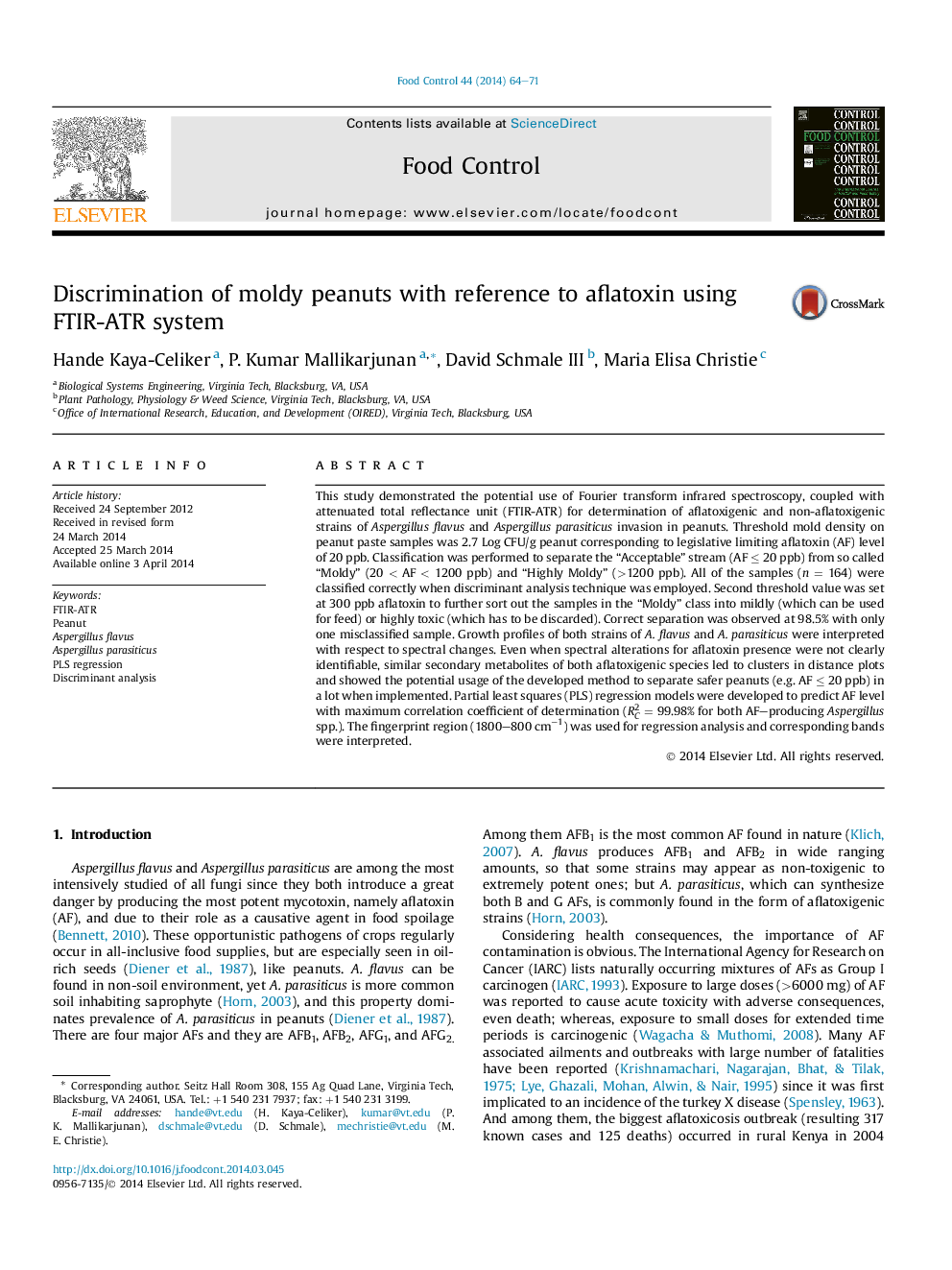| کد مقاله | کد نشریه | سال انتشار | مقاله انگلیسی | نسخه تمام متن |
|---|---|---|---|---|
| 4559338 | 1628418 | 2014 | 8 صفحه PDF | دانلود رایگان |

• FTIR-ATR was utilized to collect data for Aspergillus spp. contaminated peanuts.
• Study of peanuts infected with toxigenic and non-toxigenic Aspergillus spp.
• Biochemical fingerprints of fungal growth were observed via spectral readouts.
• Peanuts separated according to mold density and aflatoxin level.
• Threshold set to 20 and 300 ppb aflatoxin to separate peanut as food, feed or waste.
This study demonstrated the potential use of Fourier transform infrared spectroscopy, coupled with attenuated total reflectance unit (FTIR-ATR) for determination of aflatoxigenic and non-aflatoxigenic strains of Aspergillus flavus and Aspergillus parasiticus invasion in peanuts. Threshold mold density on peanut paste samples was 2.7 Log CFU/g peanut corresponding to legislative limiting aflatoxin (AF) level of 20 ppb. Classification was performed to separate the “Acceptable” stream (AF ≤ 20 ppb) from so called “Moldy” (20 < AF < 1200 ppb) and “Highly Moldy” (>1200 ppb). All of the samples (n = 164) were classified correctly when discriminant analysis technique was employed. Second threshold value was set at 300 ppb aflatoxin to further sort out the samples in the “Moldy” class into mildly (which can be used for feed) or highly toxic (which has to be discarded). Correct separation was observed at 98.5% with only one misclassified sample. Growth profiles of both strains of A. flavus and A. parasiticus were interpreted with respect to spectral changes. Even when spectral alterations for aflatoxin presence were not clearly identifiable, similar secondary metabolites of both aflatoxigenic species led to clusters in distance plots and showed the potential usage of the developed method to separate safer peanuts (e.g. AF ≤ 20 ppb) in a lot when implemented. Partial least squares (PLS) regression models were developed to predict AF level with maximum correlation coefficient of determination (RC2 = 99.98% for both AF–producing Aspergillus spp.). The fingerprint region (1800–800 cm−1) was used for regression analysis and corresponding bands were interpreted.
Journal: Food Control - Volume 44, October 2014, Pages 64–71